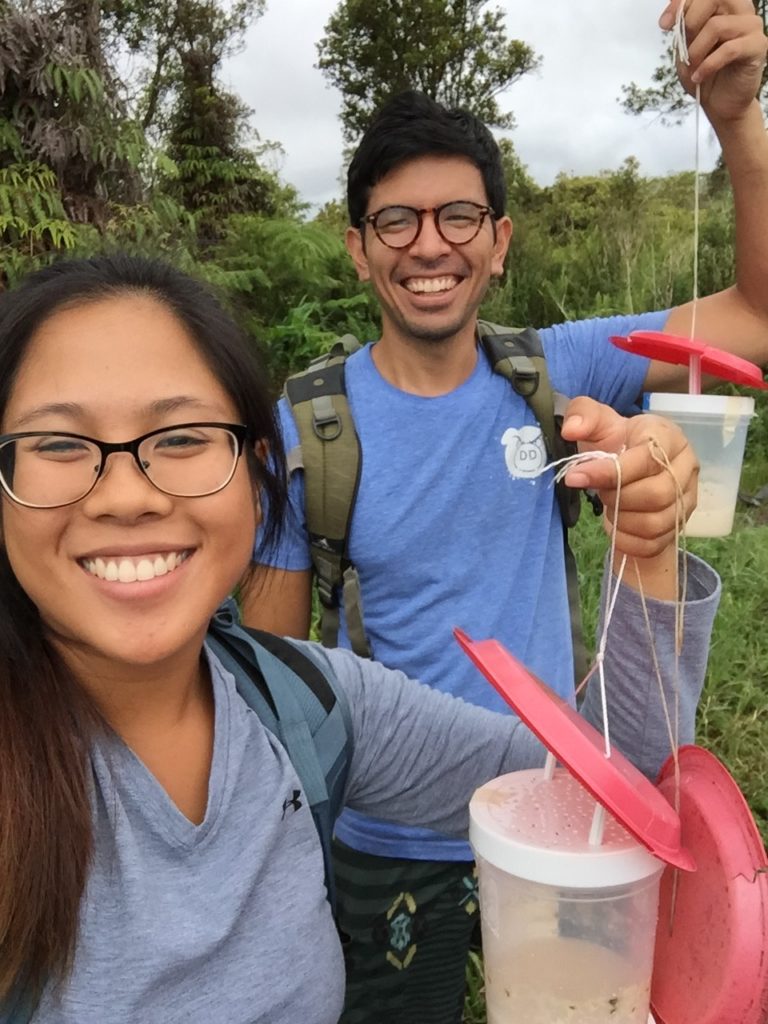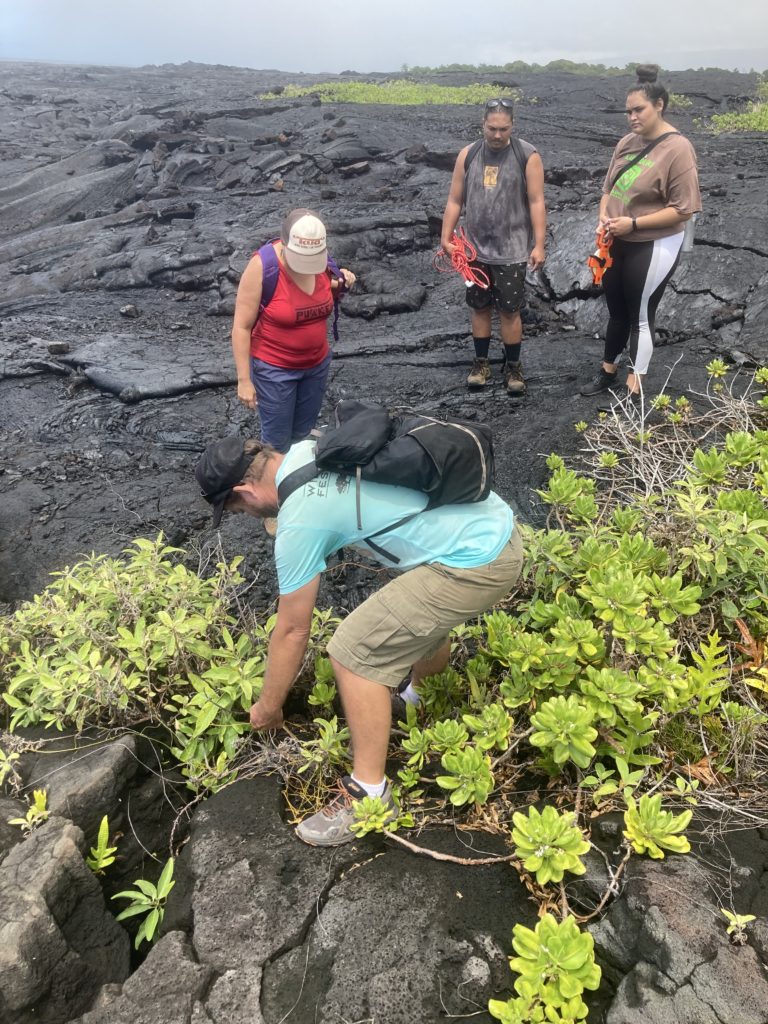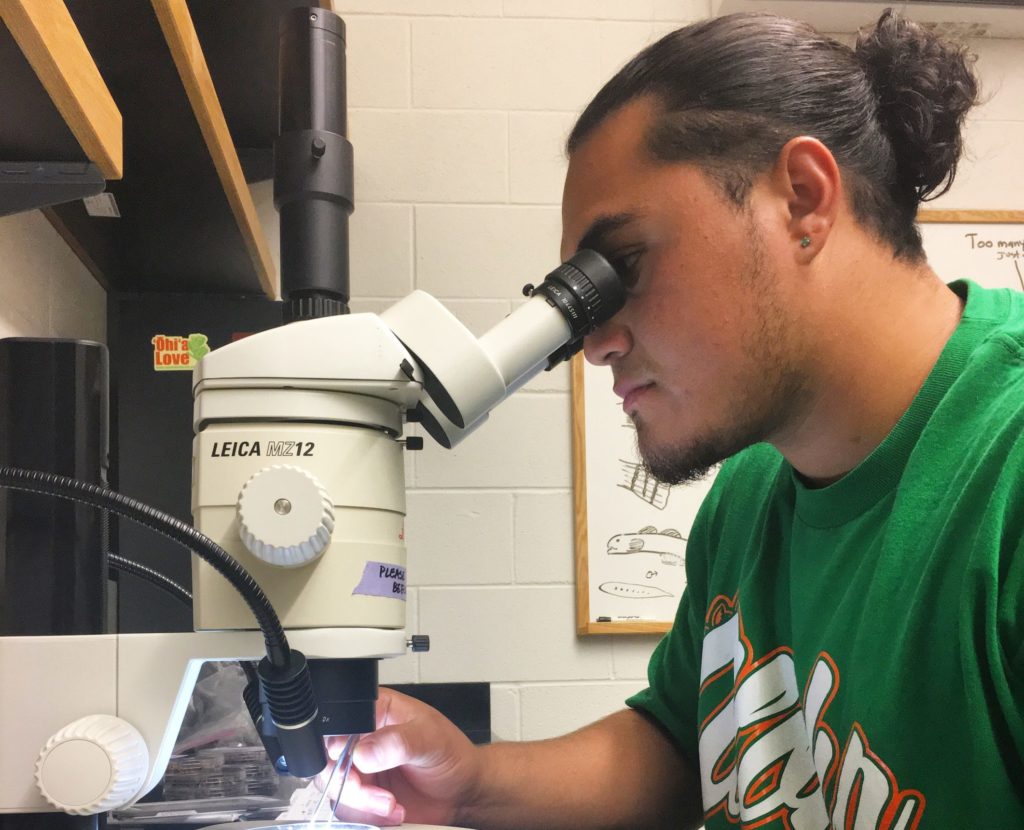Facilitating Mālama ‘Āina Pathways for the Next Generation
Over the last 28 years, the Pacific Internship Programs for Exploring Science (PIPES) housed within the Office of Research & Community Partnerships at the University of Hawai‘i at Hilo (UH Hilo), has been steadily working with partners across Hawai‘i and the U.S. Affiliated Pacific Islands (USAPI) to provide undergraduate students with transformative summer internships focused on the care and stewardship of island resources.
The roots of the PIPES program can be traced to 1994 with the start of the Micronesia and American Samoa Student Internship Program (MASSIP), created in response to concerns that the youth of the territories were not returning home or were obtaining degrees with little relevance to their island community needs. The success of MASSIP led to the creation of the UH Hawaiian Internship Program (UH-HIP) in 1997, to address the low representation of kānaka maoli (Native Hawaiians) and kama‘āina (born and raised in Hawai‘i) in the natural resource management field. In 2003, UH Hilo was awarded its first of five National Science Foundation (NSF) Research Experience for Undergraduates (REU) awards to help underrepresented students with limited or no research background to explore the world of tropical conservation biology. Since then, these three programs have been run collectively as PIPES—a carefully designed program targeting students with interests stretching from research to natural and cultural resources management to environmental education and outreach who share a common commitment to the resources and communities of these islands.

Each summer, a cohort of 30 to 40 students are paired with mentors in an intensive, full-time, 10-week paid internship program with diverse projects that range from the implementation of outreach programs, outplanting, invasive species monitoring, geospatial analysis for water quality, and coral reef assessments. Host sites for these projects are agencies and organizations from across Hawai‘i and the Pacific as well as UH research efforts. Examples of host sites include the U.S. Geological Survey’s Pacific Island Ecosystems Research Center (PIERC), Mauna Kea Watershed Alliance, Paepae O He‘eia, the National Park Service in Guam and American Samoa, and the State of Hawai‘i Division of Aquatic Resources.
Since its inception, PIPES has evolved to be more than just an internship experience—it is focused on empowering its students who are deeply connected to these islands and their communities, often ancestrally, to identify their role and pathways to mālama ‘āina (care of the land). The PIPES program accomplishes this through a cohort mentoring approach with a foundation deeply rooted in Hawaiian cultural values. In addition to their internships, students participate in multiple activities that engage them with the ‘āina (land) and in discussions of their interests, values, and future objectives. By experiencing different ways of learning about places through names, mo‘olelo (story), and participating in huaka‘i (field trips), interns connect to each other, new places and the people who care for them, and approaches to conservation in Hawai‘i that bring these ideas together.
At the core of this teaching is the concept of kuleana or the responsibility to do work that is responsive to the needs of the community. It is this focus of PIPES that forms the quintessential glue that connects the students, staff, host mentors and the extensive community of program alumni across the islands–the importance of reciprocity to place.
“Exploring one‘s kuleana and roles in caring for these islands and the central role of indigenous and local knowledge are powerful frameworks often not included in conservation internships,” said Sharon Ziegler-Chong, director of Research & Community Partnerships at UH Hilo, who also heads PIPES. “Interns in PIPES learn about themselves and gain confidence in their future roles in mālama ‘āina, in building community, and in ensuring that our island communities thrive.”

For these mentors and supporting organizations, this program has influenced not only who is involved in caring for island resources, but how it is done. “Through our efforts and those of many others, the conservation community has experienced a marked increase in local representation and influence within a single generation, which, in turn, has shifted how conservation is done in Hawai‘i and the Pacific,” added Ziegler-Chong. This has perhaps become most obvious at the annual Hawai‘i Conservation Conference (HCC), where the number of interns and PIPES alumni attending continues to grow. “PIPES Interns have helped change the face of HCC in terms of the demographics of conservation practitioners, bringing a whole new generation of researchers and managers into a conference that was once composed largely of older males,” said Sam ‘Ohu Gon, III, senior scientist and cultural advisor for The Nature Conservancy of Hawai‘i.
“Our ecologists that have mentored PIPES interns have gained from their energy, dedication, and tremendous sense of connection to the environments that we work in,” said Gordon Tribble, director of PIERC. “The perspectives and accomplishments of PIPES interns have added greatly to our biocultural awareness and shaped how our researchers view their work and its impact on the community.”
Through its efforts, PIPES has created a strong network of kama‘āina who are engaged in the stewardship of their islands and communities across Hawai‘i to the broader Pacific. Over the past 28 years of creating summer internships for local undergraduates, PIPES, its alumni and partners have transformed conservation in Hawai‘i by expanding local participation in resource stewardship efforts and fostering the long-term success of emerging professionals.
More than 800 internships later, the program continues to adapt to the needs of Hawai‘i and the USAPI. The program continues through host program partnerships and with support from Kamehameha Schools, the Hau‘oli Mau Loa Foundation, and NSF. Today, PIPES’ vision is to create a diverse and representative workforce that embodies and integrates mālama ‘āina innovations into ways of knowing, relationships, actions, and professions. Rooted in Hawai‘i and based on best practice principles of education, mentoring, and building relationships, the PIPES program can be adapted for many efforts focused on ensuring that island places and people continue to thrive into the future.
According to Associate Professor Noelani Puniwai of UH Mānoa‘s Kamakakūokalani Center for Hawaiian Studies, who is a PIPES alumnus, mentor, and co-principal investigator on REU program—“PIPES has helped to root the University of Hawai‘i within the mālama ‘āina field, bringing diversity and recognizing the role that kānaka and kama‘āina play in Hawai‘i’s conservation field.”

